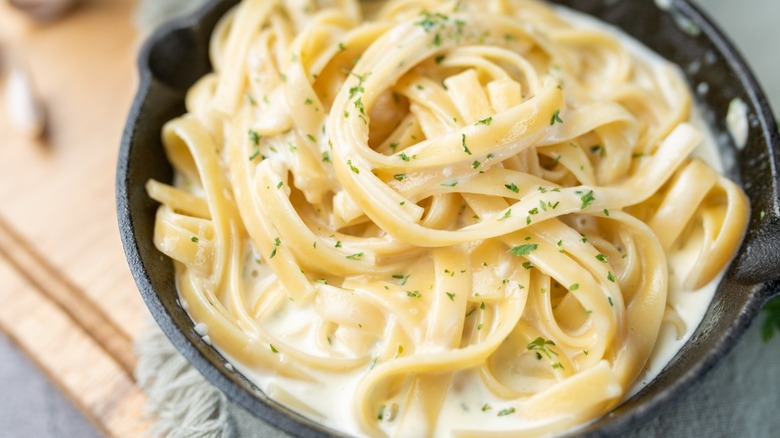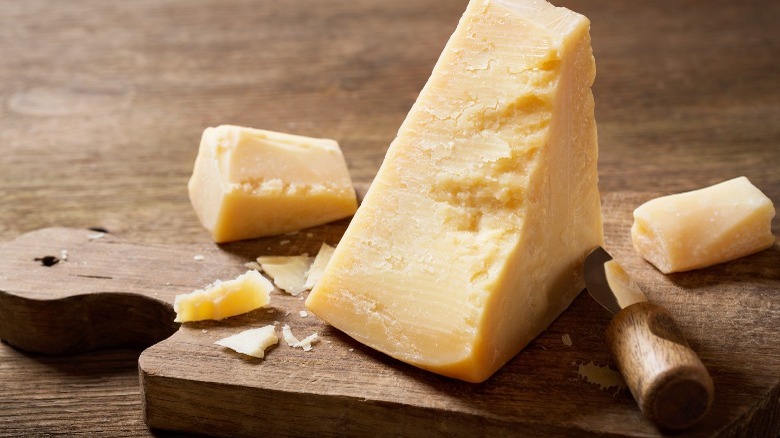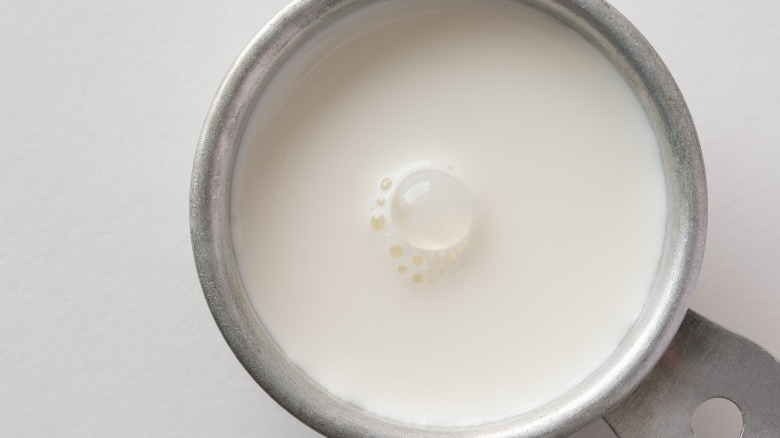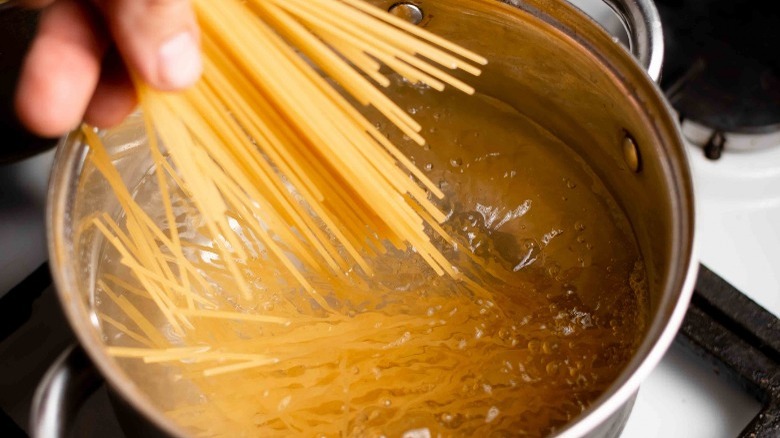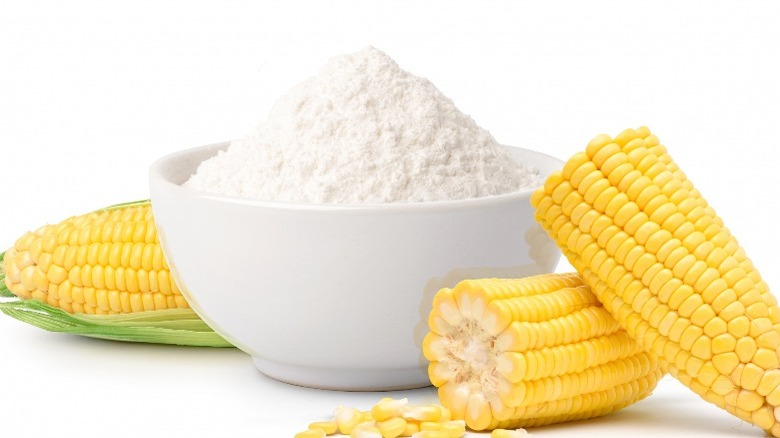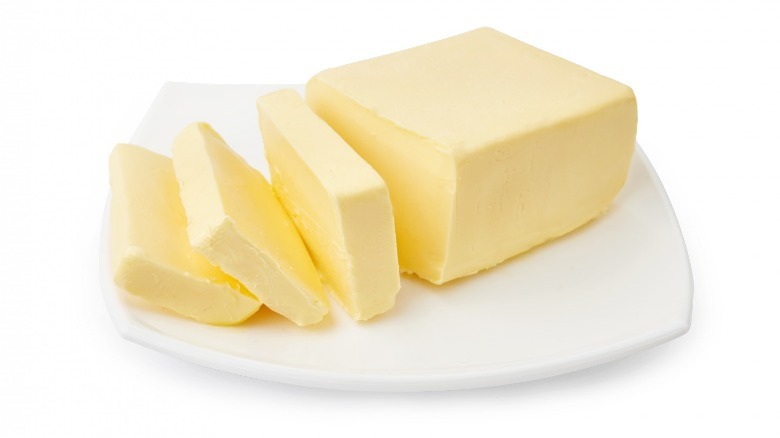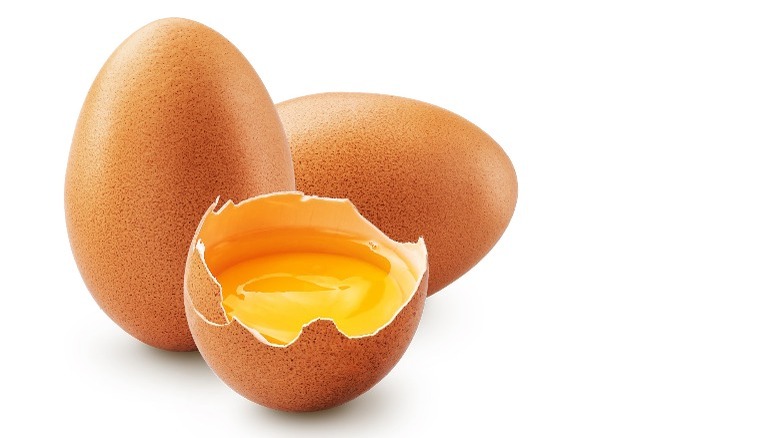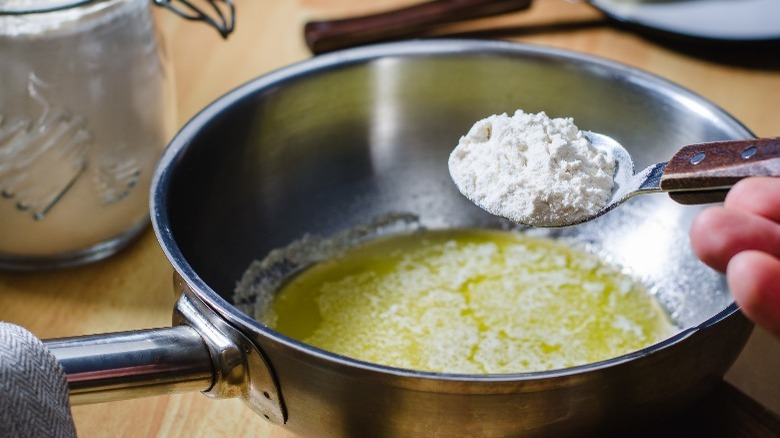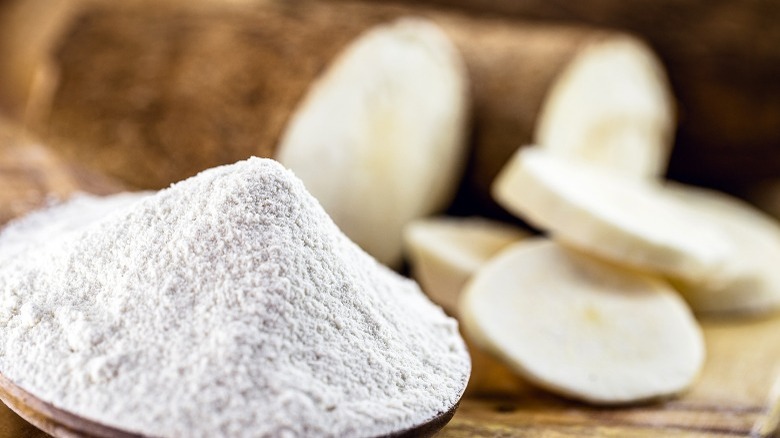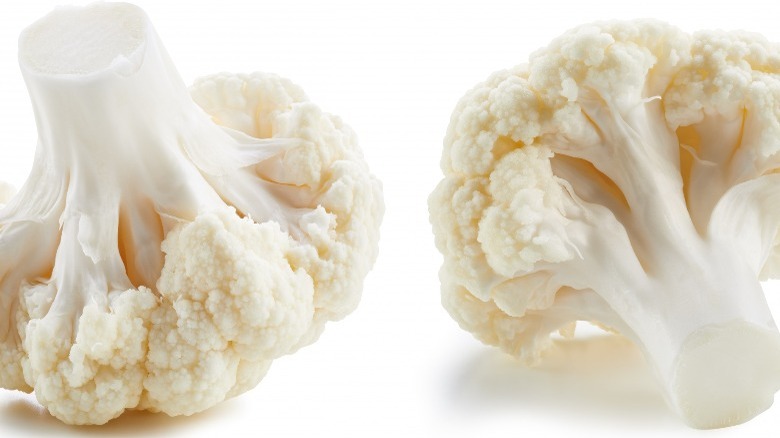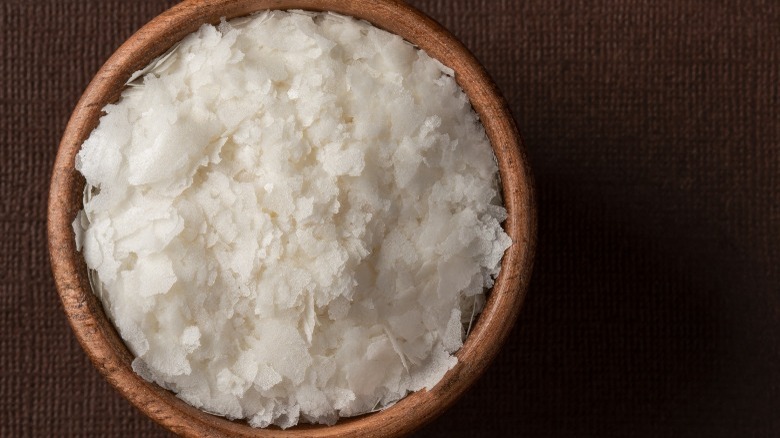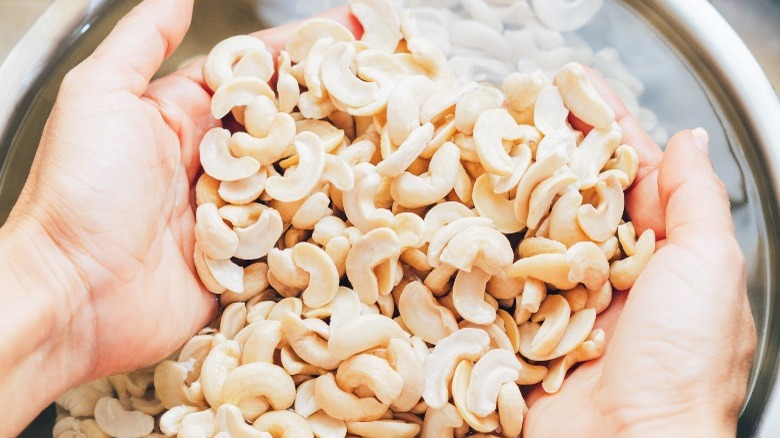12 Ways To Help Thicken Your Alfredo Sauce
We may receive a commission on purchases made from links.
When it comes to comfort food, the best dishes are simple, savory, and always leave you wanting more. Alfredo sauce, a deliciously thick and creamy concoction usually served with pasta, is a prime example. A classic quick and easy Alfredo recipe is made using heavy cream, butter, and grated cheese.
However, you may be surprised to learn that fettuccine Alfredo has ties to Old Hollywood. According to the Huffington Post, a restaurateur in Rome named Alfredo di Lelio created the creamy sauce in 1914 for his pregnant wife who was suffering from morning sickness. Douglas Fairbanks and Mary Pickford — a Hollywood power couple at the time — were honeymooning in Rome and had a chance to taste this delicious dish for themselves. As a result, di Lelio's restaurant became a destination for famous actors and tourists who wanted to indulge in the pasta dish. It soon became a hit in the United States as well.
Fast forward to today and you'll find countless Alfredo recipes. No matter what you use to make your Alfredo sauce, one thing remains the same — you want to recreate the signature thick consistency that made it so popular. To avoid common mistakes when making Alfredo sauce and to fix it if it's too thin, here are some tricks on how to achieve the desired texture.
1. Add more cheese
At its core, the original Italian Alfredo sauce really only needs two ingredients: butter and cheese. If you're trying to keep your Alfredo sauce simple but want to obtain an extra-creamy consistency, you can add more cheese than the recipe dictates. Typically, you'll want to find quality Parmigiano-Reggiano cheese to get the thickness you want while adding complex flavors to your sauce.
Parmigiano-Reggiano is exclusively produced in a specific area of Italy using milk from locally-raised grass-fed cows (via Parmigiano Reggiano Consortium). The way the cows are fed and treated is strictly regulated and supervised to maintain flavor and the centuries-old tradition of cheese making in the region. If your cheese is not labeled as Parmigiano-Reggiano, it is most likely an American-made parmesan cheese made to mimic the bold flavor of the original.
As described by Eataly, Parmigiano-Reggiano cheese has sharp flavors balanced with savory, nutty, and fruity notes. It also has a mildly gritty texture that can add depth to any dish. When melted down, this freshly grated cheese will add richness to your Alfredo sauce, giving your pasta a good bite and consistency.
2. Reduce the heavy cream before adding cheese
The original Alfredo sauce made by Alfredo di Lelio used triple cream butter and fresh Parmigiano-Reggiano cheese, which was then tossed with pasta made using three kinds of flour and more eggs than usual (via Forbes). The combination of these ingredients created a creaminess that became synonymous with Alfredo sauce. However, those same ingredients were not as readily available in America as in Italy, where di Lelio's restaurant was located. Most basic Alfredo sauce recipes today will call for heavy cream or whipping cream to recreate the thick consistency of the original dish.
One trick to help create a thick Alfredo sauce is to reduce the cream before adding freshly grated cheese (via Better Homes & Gardens). You can do this by combining the cream with melted butter and bringing it to a boil. Then, reduce the heat to a simmer and cook the cream mixture while uncovered for several minutes until it easily coats a spoon.
3. Toss in some pasta cooking water
As pasta cooks in boiling water, it adds starches to the water that can actually be used to round out or polish a dish (per Martha Stewart). Although it may seem counterintuitive to add water to thicken a sauce, the starch from the cooking water helps to bind all the elements of your Alfredo together, so it evenly coats the pasta when tossed. In fact, Rachael Ray and many other well-known chefs consider pasta cooking water to be an essential ingredient for some of their sauces.
If you want to try this tip, be sure to save some of the cloudy cooking water you used to boil your pasta. Create an emulsion by pouring the reserved pasta water into a saucepan and slowly whisking in cold butter (via American Butter Institute). Then follow the remaining steps of your recipe to get a thicker Alfredo sauce that is sure to be a crowd-pleaser.
4. Make a cornstarch slurry
Although cornstarch is a common kitchen staple today, it was invented in the mid-19th century by Thomas Kingsford and was originally used as a laundry aid (via MyRecipes). The processed powder eventually made its way into the hands of chefs, who used it as a proven method to thicken sauces.
While cornstarch is referred to as "corn flour" in the United Kingdom and some other countries, corn flour is actually a different ingredient in the United States (via Healthline). Corn flour in America is a fine, powdery flour made from grinding whole corn kernels, whereas cornstarch is made using only the kernel's endosperm portion.
If you are unhappy with your Alfredo sauce because it seems too thin, mixing in a cornstarch slurry is an effective way to get a creamier consistency (via Better Homes & Gardens). Simply combine cornstarch with cold water and stir until the mixture is even and integrated. Then, pour the cornstarch slurry into the simmering sauce a little bit at a time while whisking. Once you reach the thickness you want, remove the sauce from the heat and toss it with your pasta until fully coated.
5. Use cream cheese
One ingredient that is sure to enhance the creaminess and make your Alfredo taste better is cream cheese. It's true that cream cheese is not a standard component of most Alfredo sauce recipes, but it can elevate your sauce in both texture and flavor.
If you've somehow managed to evade this breakfast favorite, you're definitely missing out. Cream cheese is a lusciously rich type of spreadable cheese with a sweet mildly tangy flavor that pairs well with a bagel, lox, or as an ingredient in desserts and savory dishes, including crab rangoon and Philadelphia sushi rolls.
Although cream cheese is high in fat — which is also why it makes such a velvety Alfredo sauce — it also contains nutrients that can boost your sauce (via Healthline). You'll add a bit of extra protein, as well as calcium, potassium, and iron to your dish when you use cream cheese in your Alfredo recipe.
To make a cream cheese Alfredo sauce, combine it with butter, milk, and garlic and heat it until it reaches a boil. Then, lower the heat and whisk the ingredients together until the sauce is thick and perfectly velvety. Season and serve the Alfredo sauce with pasta or over other dishes, such as grilled chicken or roasted vegetables.
6. Don't skimp on the butter
Butter is an essential ingredient in any Alfredo sauce. Because it is an emulsifier, adding more to your recipe can create a smoother, thick texture that brings all the elements of your sauce together (per MasterClass).
While sauce recipes often use basic ingredients, some home chefs are wary of preparing rich sauces because they can easily break, meaning the fat separates from the other sauce components. Butter is one of the ingredients that can help bind a sauce because it's made from fat, protein, and water. Cook's Illustrated explains when butter is heated in a sauce, a thin layer of liquid coats the fat, giving it a richness that integrates well with other components. More specifically, cold butter works best to thicken sauces and prevent them from breaking.
An easy Alfredo sauce recipe by Tasting Table calls for one stick of butter to make enough sauce for 1 pound of pasta to serve about six people. The results are a decadent Alfredo that coats every noodle rather than a thin sauce that settles at the bottom of the bowl.
7. Add egg yolks
Another trick to get the creamiest Alfredo is to use egg yolks. An egg yolk whisked into your sauce can offer the same thickening results as a traditional roux, pastry chef Daniel Skurnick explains to Food & Wine. Much like butter, egg yolks serve as an emulsifier in sauces to fully integrate the elements rather than having a pot full of individual ingredients. The water and fat content in the egg yolk allows it to bind with either component rather than further separating them.
One Italian classic that uses egg yolks to create the sauce is spaghetti carbonara, another creamy and satisfying dish. However, unlike Alfredo sauce, carbonara typically does not contain any butter. Instead, it relies on fat from olive oil and bacon or pancetta mixed with egg yolks to round it out.
You can use the same idea to combine rich egg yolks with butter, Parmigiano-Reggiano, and your other Alfredo ingredients for a thicker consistency. Just be sure to separate the yolks from the egg whites and follow the recipe instructions carefully to prevent the egg from scrambling while cooking.
8. Start with a traditional roux
Countless delicious sauces start with a roux, which is a combination of equal parts fat and flour. The fat component is usually butter or oil, but some adaptations use rendered animal fat instead. In the case of Alfredo sauce, a roux can serve as a base for the creamiest version of this popular pasta sauce. Here's how.
Although there are only two ingredients required to make a roux, it's actually a little more complicated than simply throwing them together and obtaining the perfect result. Roux has the potential to easily burn if the heat is too high, so it must be stirred constantly and cooked over an even, low to medium heat to avoid that outcome. Unfortunately, once the roux burns, there's no saving it. The only option is to start over.
If you want to make your Alfredo sauce with a roux, start with butter in a saucepan over low heat. When the butter has fully melted, add the flour and whisk the ingredients together so they start to incorporate and brown slightly. Then, add milk to create a bechamel and let it simmer to thicken. From here, add your cheese and seasoning for an unforgettably creamy Alfredo.
9. Try tapioca powder
Starch gives sauces more body and an even consistency because it helps the ingredients blend and bind together. Although it's not as widely known or used as cornstarch, tapioca starch offers similar results when used to thicken a sauce. If your Alfredo recipe calls for cornstarch, try using tapioca powder instead to get the thickness you want.
Tapioca powder is made from cassava or yucca, a plant native to South America (via The Culinary Pro). Cassava is incredibly starchy because it's part of the tuberous root family. These vegetables store all their nutrients in the roots to provide nourishment for their next growth cycle (per Gardening Know How). It has even more starch than a potato, which is also a tuber.
Tapioca starch is similar to cornstarch in many ways. For one, it has a very mild taste that doesn't change the flavor of the sauce it's thickening. They both work incredibly well to thicken sauces and gravies, so they can be used interchangeably in different proportions to get the same result. Typically, chefs will use double the amount of tapioca powder as they would cornstarch (via Healthline).
10. Add pureed cauliflower
Another non-traditional way of thickening up Alfredo sauce is to add a cauliflower puree. Cauliflower is a cruciferous vegetable that is low in calories and rich in fiber, vitamin C, and antioxidants, and it may aid in digestion, weight loss, and bodily functions (via Healthline). Not only does it add a boost of nutrients to your sauce, but it can also give your Alfredo a hearty consistency that goes well with pasta, protein, and other dishes, without adding fat.
However, you should be careful not to add too much to avoid changing the flavor of the sauce beyond recognition. Also, getting the puree to the right consistency before adding it to the sauce is a crucial step that can make or break your recipe. You want to maintain the creamy texture and thickness that butter, cream, and cheese provide, so go for a silky smooth puree that doesn't have any obvious lumps.
The best way to achieve a flawless cauliflower puree is to ensure you cook the vegetable until it is incredibly tender. You can boil it in salted water or chicken stock until the florets are soft enough for a fork to easily pierce and break them. Then, use a food processor or blender to puree the cauliflower with milk until it is smooth. Add the puree to a saucepan with melted butter before adding the cheese (via Food Network).
11. Incorporate dehydrated potato flakes
Looking for a gluten-free option to help thicken up your sauce? Dehydrated potato flakes are an excellent choice many chefs use to create an extra-luscious sauce without having to add flour. Dehydrated potatoes, also known as instant potato flakes, were invented in the 1960s as a way to preserve potatoes while keeping their nutritional value intact (per My Recipes). These flakes provide a smoother texture when combined with hot liquid than other preserved potato predecessors, including potato granules.
The best part about using potato flakes to add thickness to your Alfredo sauce is that they dissolve almost instantly and leave no lumpy texture. In addition, it doesn't take much to see results. Try adding the dehydrated potato flakes one teaspoon at a time while stirring your sauce. You should see the Alfredo start to thicken up. If you desire an even thicker consistency, add another teaspoon until you achieve the results you want.
Also, be sure to taste your sauce. While incorporating potato flakes is a great way to get a creamy, velvety texture, you may need to add more seasoning to maintain the Alfredo's taste. The additional ingredient can dilute the flavors, so you may need to add more salt and pepper than you normally would.
12. Use cashews for a vegetarian Alfredo sauce
Vegetarians don't have to miss out on the creamy deliciousness that is Alfredo sauce. There are several vegetarian recipes that creatively mimic the smooth texture and savory flavors of this Italian-American staple. For example, many vegan or vegetarian Alfredo sauces use cashews to recreate the thick, ultra-rich consistency we all crave.
Cashews are an excellent vegan alternative to the traditional ingredients used to make Alfredo sauce because they are high in heart-healthy fats, which create a thick creaminess that rounds out any dish. These popular nuts also provide a myriad of other nutrients, including protein, magnesium, calcium, potassium, copper, and vitamins C and B, as well as various health benefits (via Medical News Today).
There are plenty of vegan Alfredo sauce recipes that use cashews and only a handful of other ingredients. Just make sure you soak your cashews in hot water for about 20 minutes to get them nice and soft before diving into cooking. The final product will be so surprisingly silky and "cheesy" that you'll have a hard time believing there is no actual butter or cheese in the sauce!
